Personality Styles, Coaching, and Class Experience
Most people operate in general categories. Myers Briggs, The Big 5, The Harry Potter Sorting Hat, DISC Profiles, etc., are all attempts to give people insight into how they see the world and how they prefer to address it. In this article, we are going to talk about why you need to know what your style is, and how to coach people who aren’t the same style as you so that everyone has a great class. This tool can be HUGE for helping your classes, and the whole community, run more smoothly!
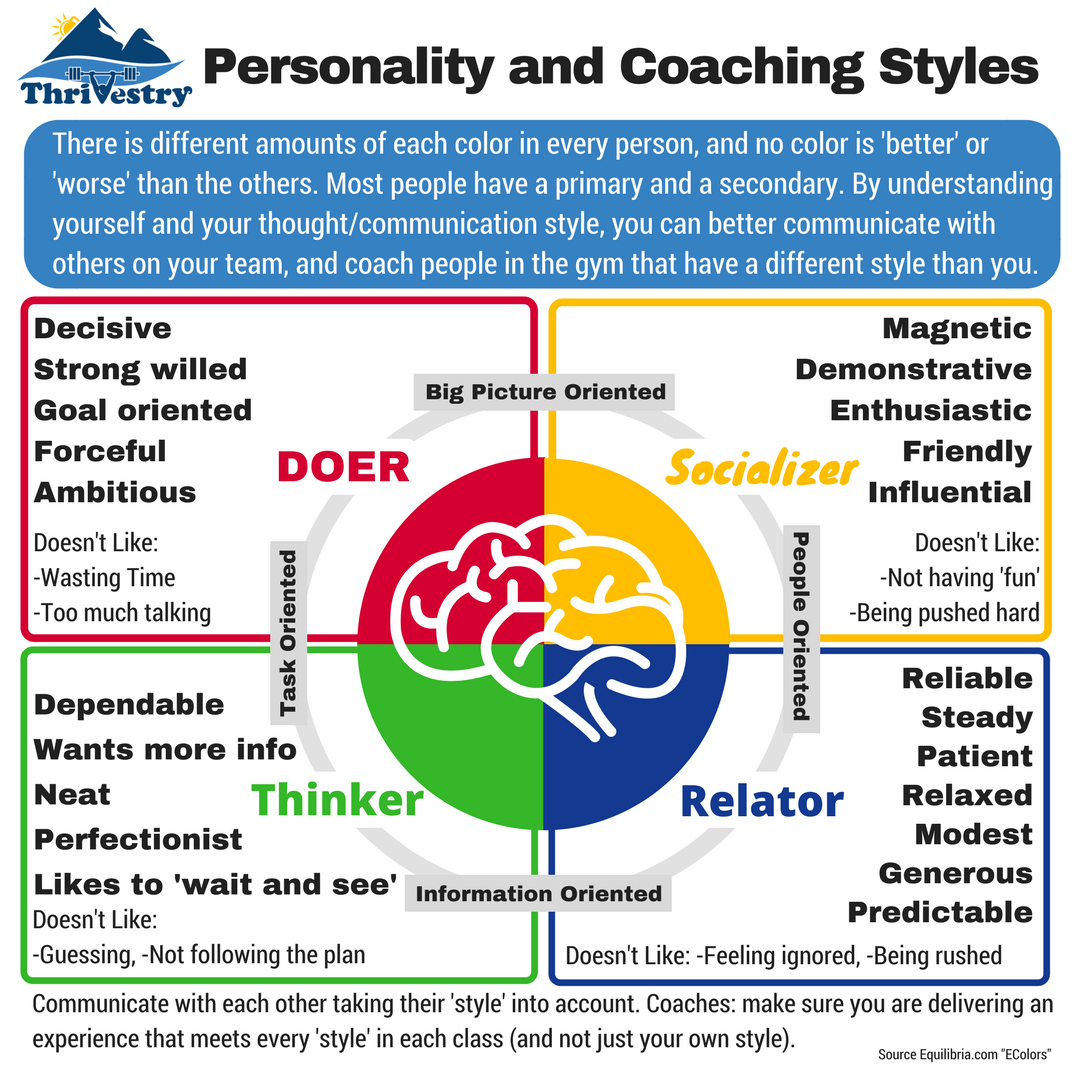
Are you not connecting with 75% of your class?
It should be no surprise that people are ‘wired’ differently and that they have preferred ways of communicating and working. By understanding ourselves and our members, we can make sure we are delivering the best class experience possible for folks when they come into the gym!
I’ve created some basic infographics to help you understand more about the different colors, but I highly recommend you check out equilibria.com to find out more information and even download their free app so you can take the test yourself!
Friction
Chances are, you have people at the gym that don’t ‘click’ well with yourself or other coaches. They may say “she talks too much in her classes”, or “I always feel rushed in his classes”, etc. Generally, this is because the coach is probably coaching the style of class that they enjoy!
This ‘friction’ comes from the fact that you (or the coach) aren’t aware that the way you like to be coached isn’t necessarily what every one wants.
Each Style in the Gym
Doers want to get things done, and they want to keep moving.
“Don’t tell me about the pain, show me the baby. Don’t ask me a circle question, I want to get started so I can work on that next PR.”
They aren’t going to want a lot of chit-chat. They are going to want to know what the tasks are for the day, and they want to get them done in a timely manner. They don’t usually want friendly encouragement. They usually want to be pushed and challenged. They want to know what is expected of them, and they want to see that progress directly (in the form of PRs or leaderboards).
Socializers are there for the community.
“Keep going everybody! Nice Job!... What round were we on again?”
They want to have fun while getting their workout done. They like to play the warm up games, do team workouts, and answer circle questions. They stick around after class to hang out with friends. They like big classes with lots of energy. They don’t need the details. They like to help others, and they generally aren’t as worried about their own performances.
Relators are there to connect with others.
“It is great seeing you again! How is work? How is your family? What is the workout? I didn’t check.”
They want to feel a good connection with their coach and some of their friends. They want individual attention. They don’t want to be put in the spotlight or deal with confrontation. They generally don’t like being yelled at, but they do enjoy quiet encouragement on the workout. They don’t like to be rushed from one thing to the next because they don’t get to talk to other folks in the class.
Thinkers like to know what the plan is, why it is the way it is, and then execute the plan as written.
“The last 3 times I did this, I PRed by 20 seconds each time. Today I am going to try breaking up the sets differently. Is that a typo on the board? Last time you had me sub a different way, why is it different today?”
They only want the facts and aren’t looking to talk about things that don’t apply to the tasks at hand. They want to get everything assigned done that day, and they want it done in a timely manner. They like the extra details on the whiteboard/screen. They don’t want to be silly or play games. They like to have a plan for every workout, and they like to be given information while they workout (what the time is, what round they are on, how to break up the next movement, etc.).
Here is a more detailed graphic you can use to understand the different styles:
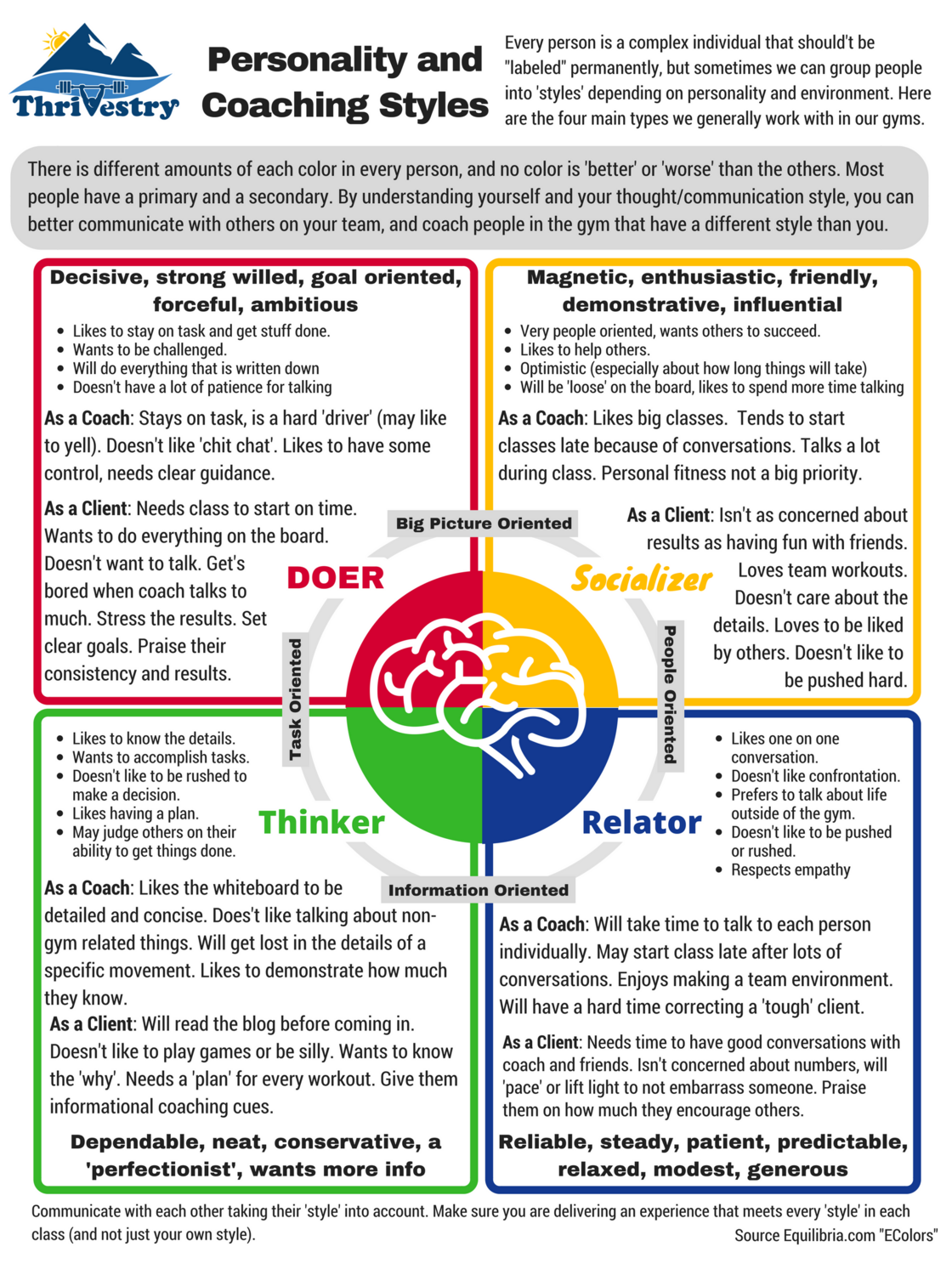
Now some people will be easy to pin down (“She is a hard Red…”), and other people may be a little harder to get figured out (“I am not sure if he is a Yellow or a Blue”). I recommend printing the above graphics, and then talking to folks for a few weeks about where they are, and how you can be a better coach for them (better yet, you can have them take the actual test)!
The important part is that people understand that no color is ‘better’ than the others. It is just a very general grouping according to people’s preferences on a usual day at the gym.
What Now?
After you have figured out your own type, it is important to deliver something to the other groups so they don’t feel left out. It will make your coaching popularity soar immensely.
If you are Doer Coach:
- Make sure you spend some time doing ‘fun’ stuff, and not just pushing people to ‘grind’.
- Give people time to talk and connect.
- Don’t assume everyone wants to be pushed or yelled at during their metcons.
- Take a moment to talk to the folks who are Socializers or Relators.
- Make time to explain why we are doing what we are doing, and what the processes are for progression.
- Try to ask people about their lives outside of the gym.
- Don’t just praise people for performance or effort. Celebrate people for their enthusiasm, their helping of others, or their knowledge.
If you are a Socializer Coach:
- Start (and finish) the class on time!
- Get people moving right away, and don’t spend too much time on the circle question or ‘shooting the shit’.
- Watch the clock so you don’t get behind.
- Don’t put people in the spotlight if they aren’t looking for attention. Don’t make people do elaborate games that don’t have a purpose.
- Avoid cheering people on who don’t want it. Be sure to ‘push’ and challenge those who want it.
- Don’t gloss over the details. Explain WHY we are doing it.
- Don’t just praise people for their enthusiasm or think that it is all about fun. Talk people up for putting in a good effort, setting a PR, or ‘doing their homework’ (reading about the workout ahead of time).
If you are a Relator Coach:
- Talk to people before class if you need to and start the class on time!
- Make sure you are getting people to interact as a group, not just coaching people one at a time.
- Do not get carried away talking to only a few people one at a time, move on so that you talk to everyone, and don’t forget to address the group.
- Be firm when coaching, and don’t be afraid to push people to do the right movement for them. It is what is best for them (stand your ground)!
- Take charge of the class and keep people on time.
- Don’t just praise people individually. Point out to the group when people worked hard, know their progressions, and when someone was helping others (with enthusiasm, etc.)
If you are a Thinking Coach:
- Don’t spend too much time at the whiteboard explaining in detail what the programming is for the day.
- Make time for people to connect and chat where possible.
- Let people take extra time on certain parts of the class (don’t rush them to the next thing).
- Don’t worry about everything being ‘perfect’ or sticking to a fixed schedule.
- Try to be more positive and encouraging. Make the classes ‘fun’.
- Don’t be too judgmental of other people’s approaches or progress (or other coach’s advice).
- Make sure you get the group to interact, and that you have good one on one conversations with folks when you can.
- Avoid giving too much detail or too many coaching cues when coaching a movement.
- Don’t forget to praise people, or just praise people for understanding the movements and progressions. Celebrate people for their enthusiasm, their effort, and for helping each other.
The Magic
The real magic happens when you make it a habit of doing the stuff that doesn’t come natural to your type and when you know the types of the people in your class. You’ll keep the class moving and on time so the Doers get a lot done, but it will be fun and there will be group interaction. You’ll highlight the Socializers, and you’ll have a heart to heart with the Relators. You’ll explain the theory of the workout without overwhelming people with the details (wasting time or not having enough time for people to connect). Everyone will walk away having had a great experience, looking forward to your next class.
Introduce this to Clients
Go ahead and post the simplified version of the graphic to your business page or to your private group. Ask the question: “What type of person are you at the gym?” or “What type of person is the coach you go to most?” Talk about it in the classes for the next few weeks. Make it your circle question occasionally (“What is your type, and what is your biggest pet peeve in class?” or “What is your type, and what is your favorite part of training here?”). You can even group people up by type and have them train together or do warm up games together!
Remember that it is your job as a coach to deliver the experience that speaks to the most people. If you are only speaking one language, you are probably alienating some people and they aren’t going to enjoy your classes because of it!
Thrive on.
-jj
Part 2: Personality Styles and Online Coaching
When working remotely with people one-on-one or in a group, it is important to understand them from a personality-type standpoint. Here is a tool you can use to help deliver a better online coaching service!
The BIGGEST Problem with the Fitness Industry
What if I told you there needs to be a monumental shift in the fitness industry?
Fitness professionals, enthusiasts, and facilities are focusing on the wrong things...
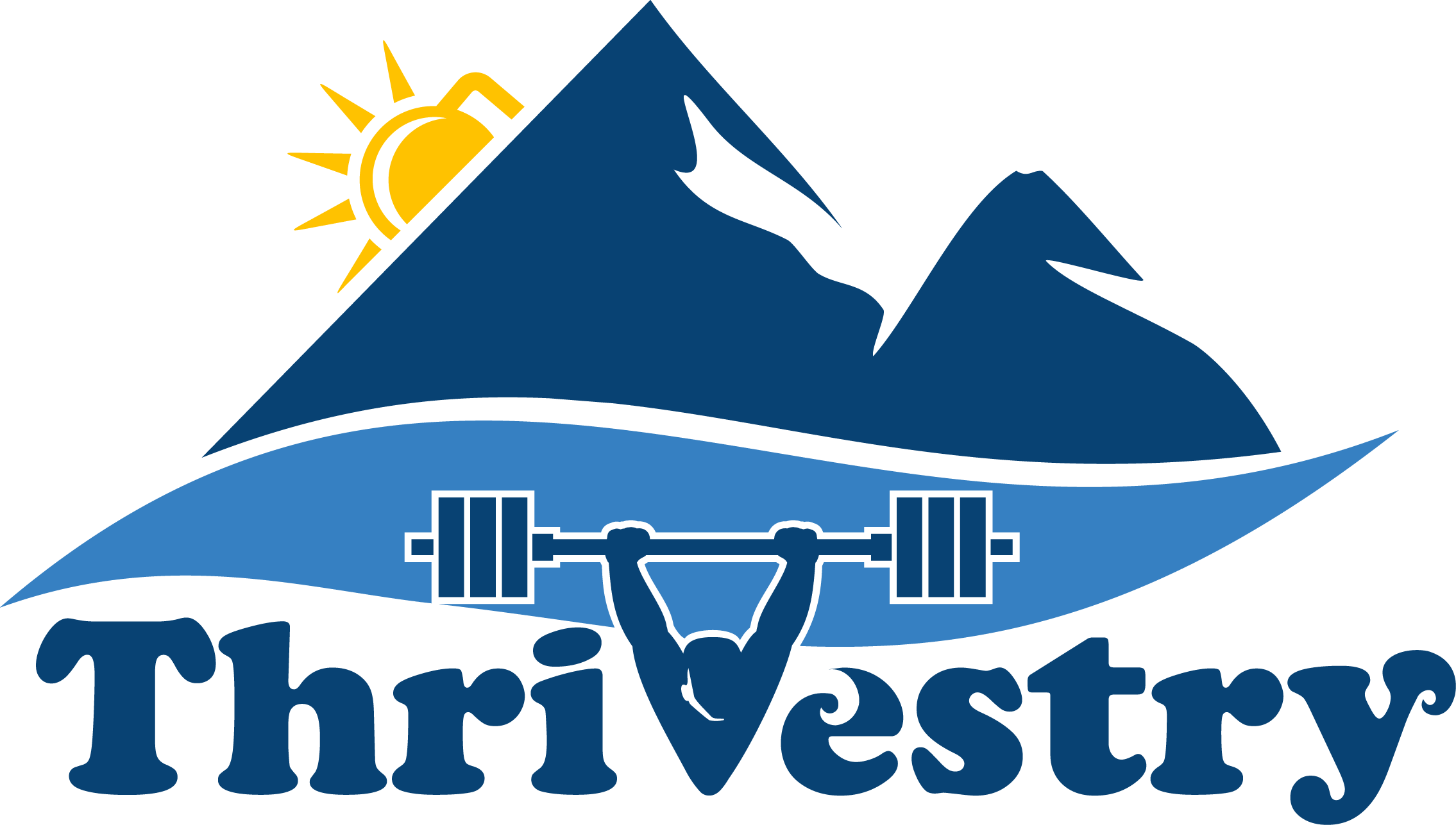
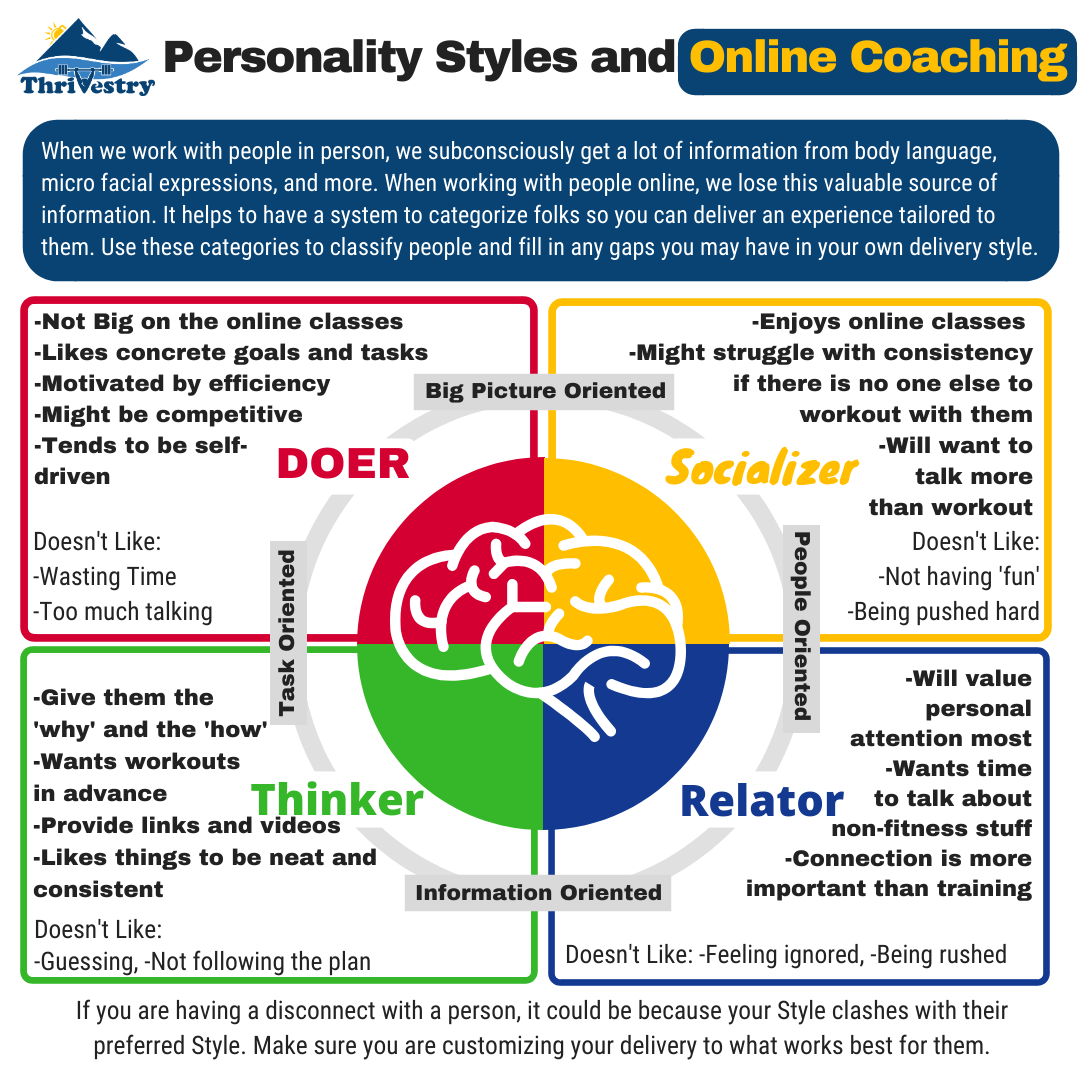
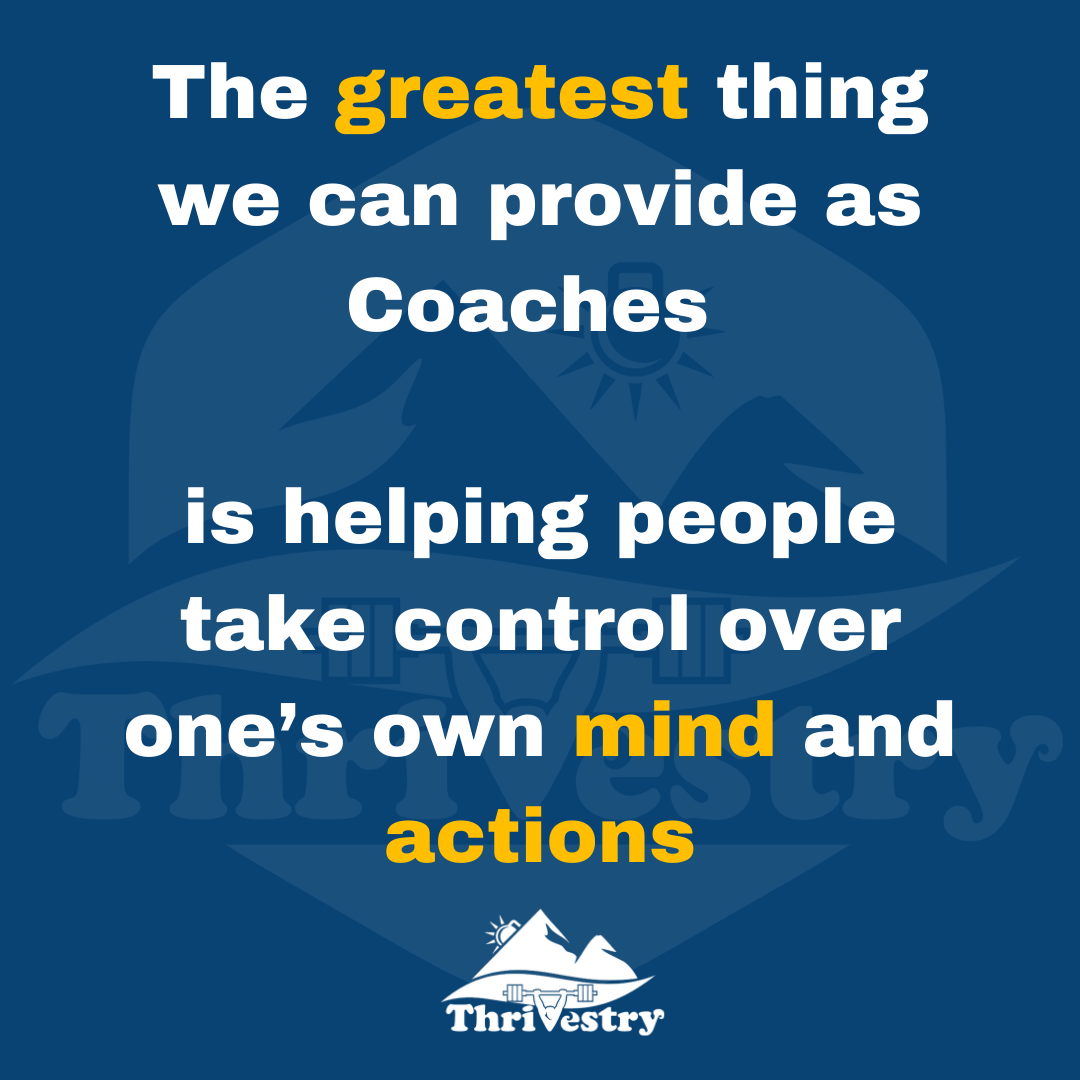
0 comments
Leave a comment